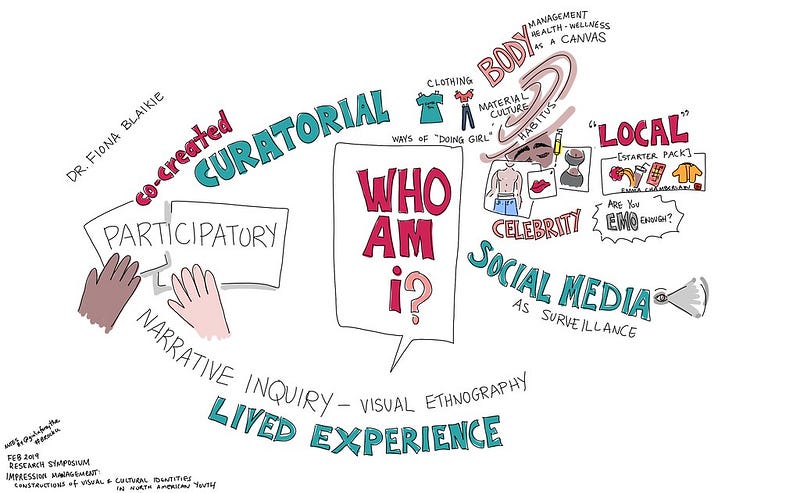Intersectionality and Authority
As leaders, we can take the concept of intersectionality and apply it directly to every exchange.

When, as a teenager, I first started hearing terms like “privilege” used, I didn’t think much of them. I could see systemic injustices all around me and experienced a fair few of them, and my life had rarely felt privileged. Why would that term apply to me?
I, however, have always enjoyed a knee-jerk reaction on behalf of the underdog. The more I saw people piling on to anyone who used the term, the more I found myself interested in discovering exactly what it meant.
Eventually, my thoughts on this area coalesced through a series of conversations with a friend. Not because my friend was a supporter of intersectional theory, either. Quite the opposite. The more my friend took umbrage with the term, the more I realized there must be something to it. For one thing, my friend refused to consider it from their own perspective. Despite being a tenacious and logical thinker, they lacked the ability to step into the position of the arguer and, on their own, attack their presuppositions and strongly held beliefs.
For my part, I’ve never liked conversations that are actually arguments, so our coffee table chats usually just went in circles. But that process helped refine for me what someone totally obtuse to the power structures that surrounded them would look like.

Kimberlé Crenshaw, the legal scholar who created the term “intersectional,” wanted to highlight how distinct forms of oppression needed to be seen within larger contexts in order to be overcome.
In a 1991 essay for the Stanford Law Review, Crenshaw writes, “Feminist efforts to politicize experiences of women and antiracist efforts to politicize experiences of people of color have frequently proceeded as though the issues and experiences they each detail occur on mutually exclusive terrains” (p. 1242).
Her point was that neither feminism nor antiracist efforts were actually helping black women. Feminist efforts were operating from assumptions that inherently presupposed certain resources and circumstances that many black women would not have access to. Meanwhile, antiracist efforts favored the experience and difficulties faced by black men. Thus, ironically, though both efforts should have doubly included black women, neither truly could.
In this way, Crenshaw pointed out that “prevailing structures of domination shape various discourses of resistance” (p. 1243). Intersectionality could be a “concept linking contemporary politics with postmodern theory… a methodology that will ultimately disrupt the tendency to see race and gender as exclusive or separable” (p. 1244).
Intersectionality is, quite literally, what it sounds like: discovering those points of intersection between different fields of identity, class, race, financial status, physical ability, cultural lineage, and more. Indeed, the intersection between all the myriad elements that make up any human’s total being.
This is a vital perspective to understand for anyone in a leadership position. As the world continues towards a nearly seamless level of integration and globalization, the difference between group members cannot be ignored or homogenized — nor should they. Differences within action groups can be tremendous sources of strength for an organization, but only if those within positions of leadership are willing and able to accept and make use of the diversity.
For two years following the 2016 election in the United States, I organized a local Democracy Cafe in my hometown. Part of the Socrates Cafe movement started by Christopher Phillips, the goal is one of open dialogue and the isolation of common ground between members. Rather than browbeating through logical argumentation, a process of exploratory socialization and Socratic questioning leads the whole group through an experience of self-reflection and growth.
This model is not explicitly intersectional, but its foundational principles are implicitly so. As I facilitated these groups, I frequently encountered opinions and perspectives that were tied to a speaker’s identity. Learning to navigate strongly held beliefs and provide a safe space for everyone to share their perspectives and experiences was one of the most challenging aspects of the work. However, by doing so, our group was able to isolate commonalities of perspective that would have been lacking if the full scope of each member’s experience had not been recognized.
Crenshaw writes that through “an awareness of intersectionality, we can better acknowledge and ground the differences among us and negotiate the means by which these differences will find expression in constructing group politics” (1991, p. 1299).
As leaders, we can take the concept of intersectionality and apply it directly to every exchange, every organization, and every event. For all the complexity that this entails, the result is a deeper grasp of the places where the experience of those we lead overlaps and where divergence resides.
By honing in on these complications, we create a network that is far stronger than any homogenized affair, and we make the world a better place at the same time.

Hi there! I’m Odin Halvorson, an independent scholar, film fanatic, fiction author, and tech enthusiast. If you like my work and want to support me, please consider subscribing to a paid tier for as little as $2.50 per month!
References
Crenshaw, K. (1991). Mapping the Margins: Intersectionality, Identity Politics, and Violence against Women of Color. Stanford Law Review, 43(6), 1241–1299. https://doi.org/10.2307/1229039
